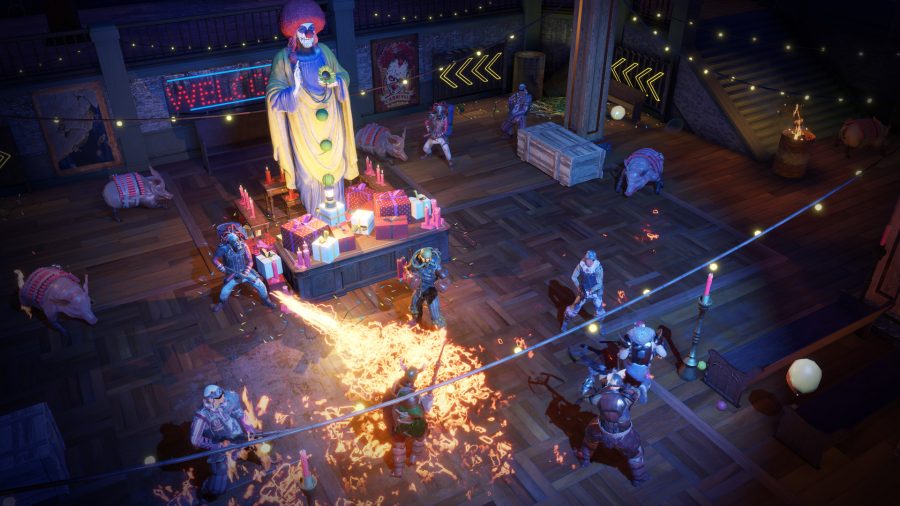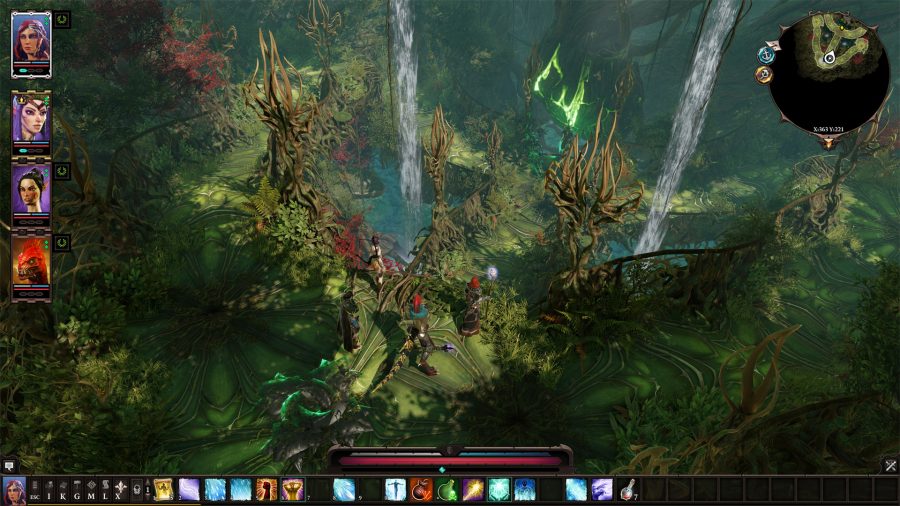There was a time when the idea of playing a sweeping fantasy RPG with a grand branching story, freedom, and choices innumerable was, well, the stuff of fantasy. From the great CRPGs of the ’90s through the entire Elder Scrolls series, Dragon Age, and The Witcher, solitude felt like an endemic part of the genre experience; close the blinds, light a girthy asymmetrically melted candle to set the right ambience, and lose yourself in your own stories in Skyrim. Some of these games – like Baldur’s Gate and Neverwinter Nights – had multiplayer, but it was always an afterthought, letting a second player tag along for the ride without letting them forge their own path.
Larian’s Divinity: Original Sin changed that in 2014, building cooperative play right into the campaign, and producing one of the best co-op games as a result. Suddenly, both players could chat to whoever they wanted, squabble in-game over key decisions, and generally piss about with wanton role-playing abandon. It was a breakthrough, a tome of game design that finally documented the arcane secrets of creating a multiplayer RPG in which both players got to play an equal role.
InXile’s Wasteland 3 – a more recent alum of the CRPG design school – seems to follow Original Sin (and its even better sequel) with a similar multiplayer experience, in which you and a friend can play through the entire campaign together. And while it works (well, when the game itself does – see boxout), I keep encountering design flaws that make me wish I could wave a copy of Original Sin 2 in Brian Fargo’s face and say ‘You had the blueprint right here on how to do this!’
Of course, it’s important to remember that Wasteland 3 is its own game with its own identity. It’s more segmented and more linear than Divinity’s creative sandbox of RPG possibilities. In some ways, it even surpasses its fantasy cousin – for example, in making your choices more weighty and impactful on the game world. But both games reside within the same small subgenre of old-school RPG, and a degree of creative osmosis between studios is part of how these things progress. By not following key parts of Divinity’s multiplayer blueprint, Wasteland 3’s strengths and good ideas get diluted as soon as another player joins you.
There’s the dialogue system for starters, which works by one player controlling the conversation and having the ability to ‘transfer authority’ over to the other. Seeing as whoever controls a given conversation has access to all the party’s dialogue perks anyway, the only reason you’d transfer authority is to make the other player feel more included. The other player can highlight the option they’d pick, but that’s the extent of their in-game power to sway a chat. You can always discuss the big decisions with your partner outside the game, but all this pulls you out of the role-playing experience that Wasteland 3 is otherwise so committed to. It takes agency away from the characters you or your partner control, and the interesting tensions that can result from defying a partner’s decision in-game.
This would be a little less egregious if it followed another Divinity design choice of making all conversations optional for the player who doesn’t initiate them. Instead, my partner and I constantly found ourselves pulled into conversations that we couldn’t leave or influence in a satisfying way. This doesn’t happen with all conversations, but the rules around it are unclear. Even separate conversations have a weird habit of being completely audible, even if you’re far away from them or engaged in your own dialogue.
In Divinity: Original Sin, players can have in-game disputes with each other about conversational outcomes, resulting in a rock-paper-scissors showdown based on your respective Persuasion stats. This was regretfully dropped for the sequel, but Larian has reintroduced it in the form of a voting system for Baldur’s Gate 3. You can pick flaws in both approaches, but they at least integrate conversations involving more than one player character (and disagreement about them) into the game itself.
You spend a lot of time in Wasteland 3 chugging around in the Kodiak, the Rangers’ vehicle of choice for traversing the post-apocalypse game’s frigid wastes. In multiplayer, if one player is driving, the other player can’t do anything but honk the horn – you can imagine how tiring that becomes. If a radio broadcast comes in, then no matter who’s in control of the conversation the Kodiak will grind to a halt until the dialogue is over. This feels more like an oversight rather than a decision, but reflects what feels like a lack of focus on little details that help the second player feel as much a part of the adventure as the first.
But possibly the biggest omission (and, in fairness, the one with the best chance of being addressed in a future update or definitive edition) is the lack of split-screen. Again this is one of those things that would have been scoffed at before Divinity: Original Sin, but now that it exists the benefits can’t be ignored. The forbidden fruit of great ideas has been tasted, and it’s now impossible to go back to simpler, more benighted times.
Beyond granting the general joy of sharing in your partner’s interactions, conversations, and other dalliances, Divinity’s split-screen serves an even higher purpose: pacing. Combat is one of the biggest pacing bottlenecks with any turn-based online game, and Wasteland 3 suffers for not giving the inactive player any kind of insight into their partner’s moves – no available abilities, no grid showing movement options, nothing. You’re just watching a motionless screen until your partner executes their moves.
Split-screen negates this downtime by giving you a full view of your partner’s options. The main danger here is that it tends to bring out the backseat gamer in all of us, and you may need to set some boundaries lest your in-game behaviour gets interpreted as a microcosm of what an insufferable control freak you are in real life.
Ironically, Divinity’s online multiplayer doesn’t really take on board the lessons from its own split-screen mode, with combat becoming an especially prolonged waiting game when you’re playing with three others. But it still teaches us that co-op RPG games are best enjoyed when you can be involved in each other’s experiences, even in minute ways. The excellent implementation of Divinity’s split-screen should inspire all future CRPG developers when designing a co-op campaign, and Wasteland 3 missed a golden opportunity to learn from and improve on it.
This isn’t just a call for split-screen in all co-op RPGs (though that would be lovely), but for more abilities to interact with what’s happening on the other player’s screen. How about more information about what they’re doing in combat, or a small dialogue box showing your partner’s key conversations, which you can then optionally join rather than be forcefully pulled into? Even the ‘ping’ function introduced in Divinity: Original Sin 2 – which lets you send a glowing marker to all players’ screens – creates the kind of interactivity between players that would help Wasteland 3 feel like a true co-op RPG, rather than a single-player one with multiplayer bolted on.
Related: Check out our Gina’s Wasteland 3 review
For all its flaws, I’m still having a good time with Wasteland 3’s multiplayer, in part because it remains one of very few full-blooded RPGs that can actually be played alongside a friend. In this sense, it remains a rare novelty. But it comes in the slipstream of games that redefined the possibilities for co-op RPGs – not so much rewriting the rulebook as writing a cohesive one in the first place. When a trailblazer like Original Sin comes along, you either need to iterate or build one hell of an alternative. For some reason Wasteland 3’s multiplayer does neither, making it feel archaic in ways that it really didn’t have to.



